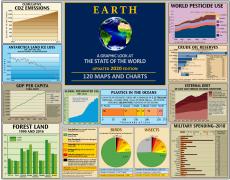Emissions
The essential data about emissions explained in 9 infographics. Detailed tables and charts covering revenue, debt, inequality, and co2 emissions of the most powerful countries and corporations, greenhouse gas emissions per kilogram of food, co2 emissions 1751–2017, world cumulative co2 emissions and more. Learn the truth about emissions and how it relates to the state of the world on The Global Education Project website with un-biased facts from the most reliable sources.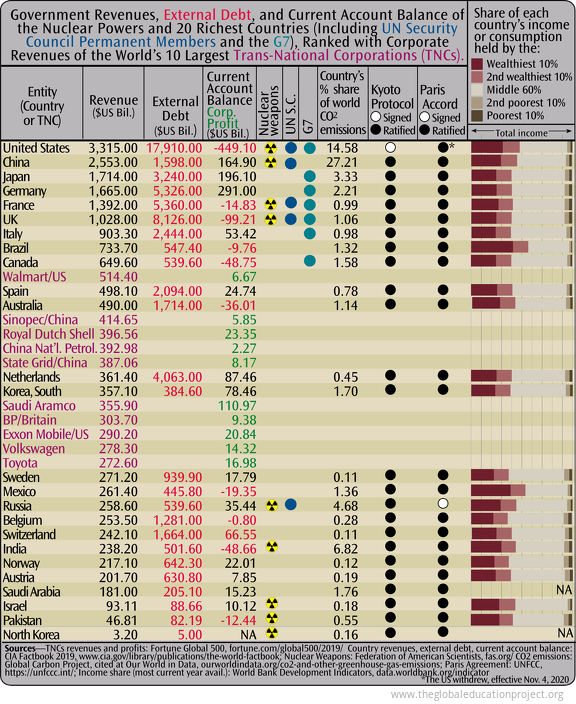 The above chart compares the world's largest trans-national corporations with the wealthiest countries and nuclear powers: Revenue, Debt, Wealth Inequality, and CO2 Emissions.
The above chart compares the world's largest trans-national corporations with the wealthiest countries and nuclear powers: Revenue, Debt, Wealth Inequality, and CO2 Emissions.
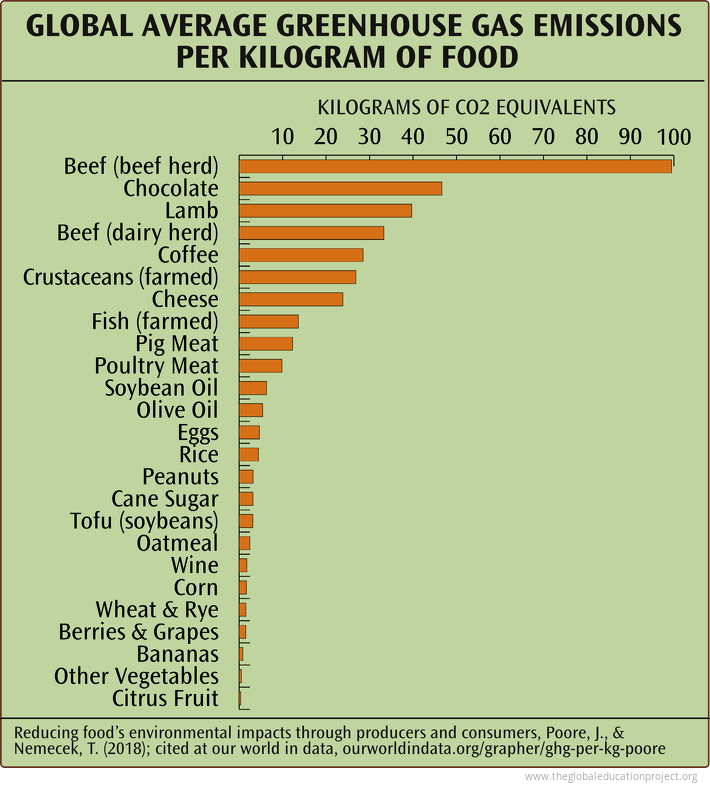
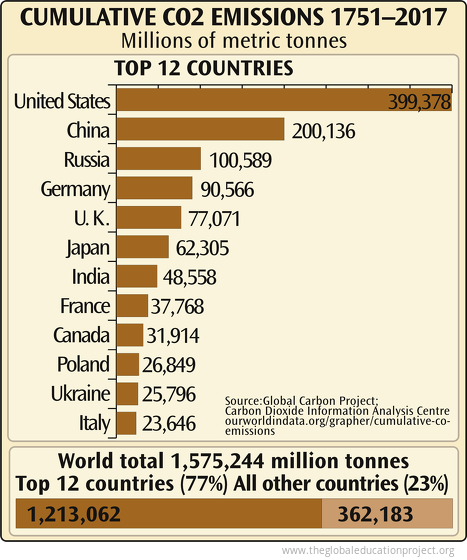
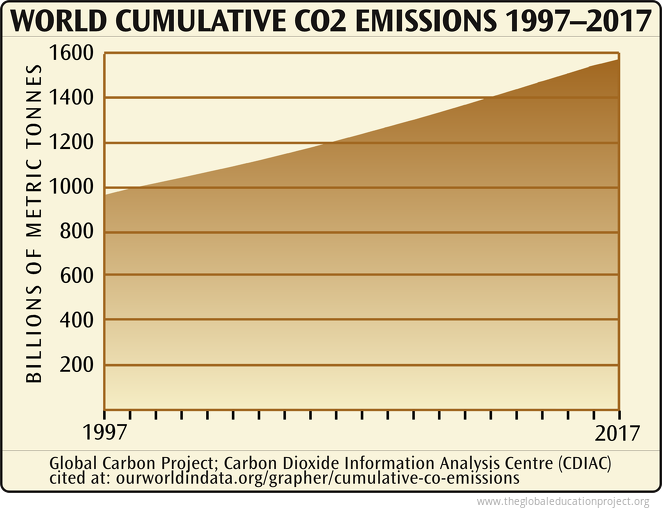
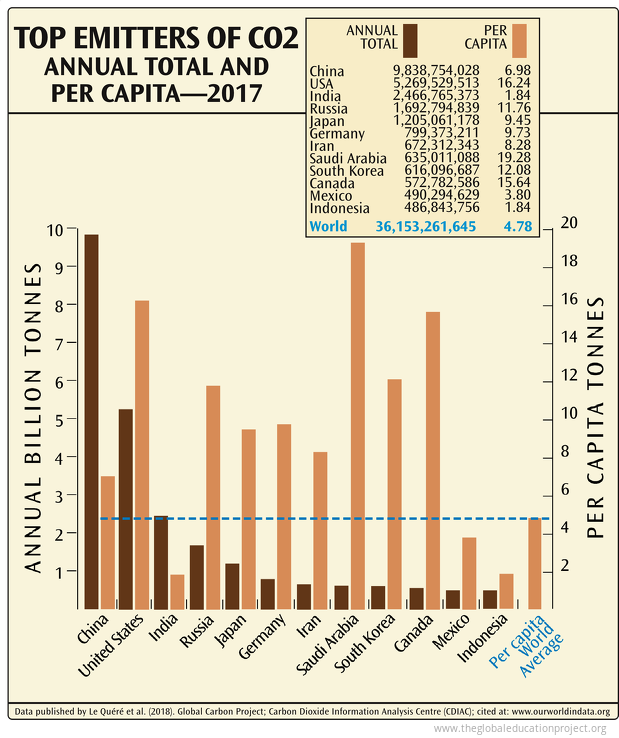 Research reported in 2017 shows that just 100 fossil fuel producers emitted 71% of global industrial greenhouse gases from 1988 to 2015.
51% of industrial emissions since 1988 can be linked to just 25 producers, including both public and state-owned...
Research reported in 2017 shows that just 100 fossil fuel producers emitted 71% of global industrial greenhouse gases from 1988 to 2015.
51% of industrial emissions since 1988 can be linked to just 25 producers, including both public and state-owned...
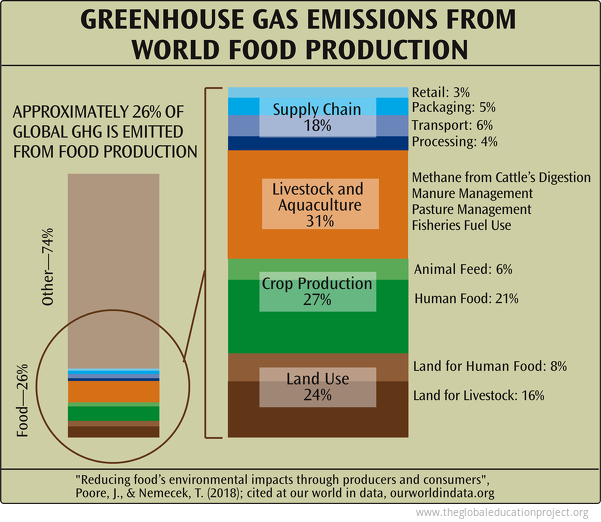
Historical and contemporary overview of greenhouse gas emissions and atmospheric concentrations—which countries emit the most CO2, total and per capita; methane; ocean warming and sea level rise; global temperature projections; glacier and ice loss.
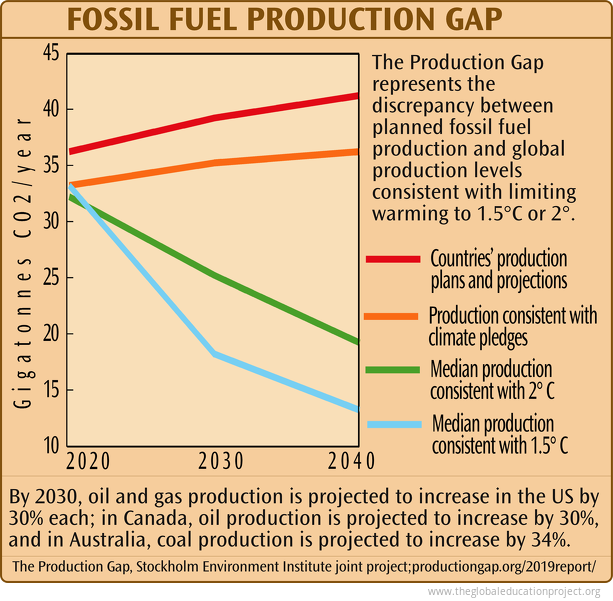 Countries are planning to produce about 50% more fossil fuels by 2030 than would be consistent with a 2°C global average temperature rise, and 120% more than would be consistent with a 1.5°C rise.
The production gap is largest for coal. By 2030, countries...
Countries are planning to produce about 50% more fossil fuels by 2030 than would be consistent with a 2°C global average temperature rise, and 120% more than would be consistent with a 1.5°C rise.
The production gap is largest for coal. By 2030, countries...
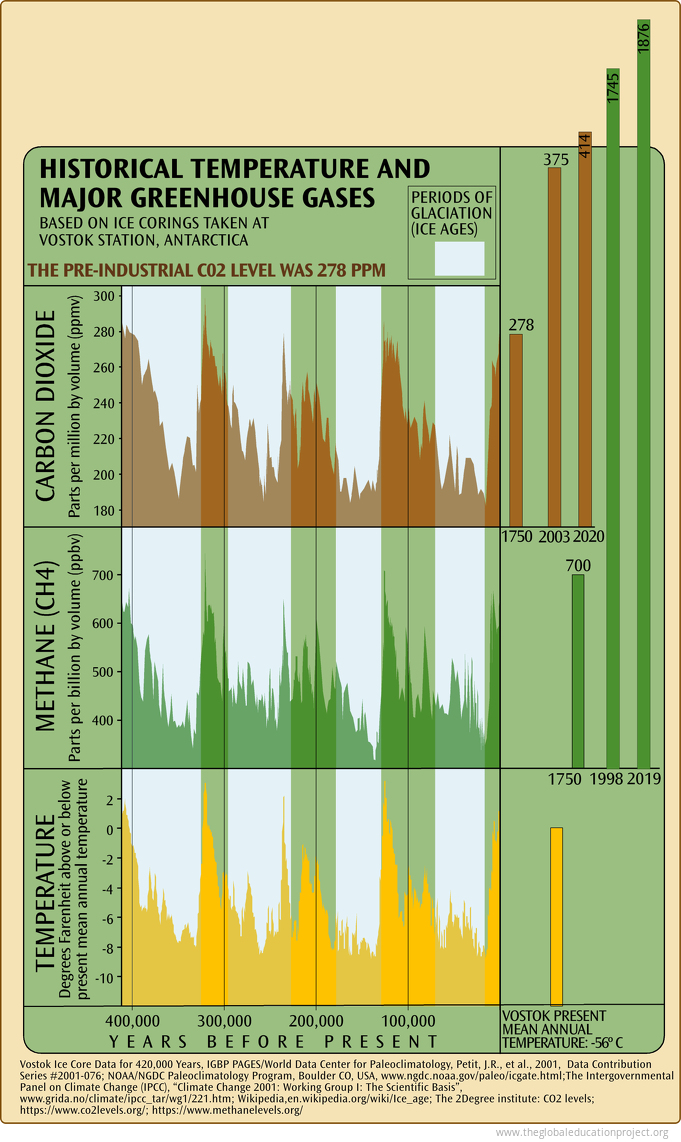 CO2 concentrations are well above historic maximum levels.* The GWP (Global Warming Potential) of methane gas (CH4) is greater than the GWP of CO2. Warming could release vast quantities of CH4 from thawing tundra and seabed methane hydrates.
*Levels...
CO2 concentrations are well above historic maximum levels.* The GWP (Global Warming Potential) of methane gas (CH4) is greater than the GWP of CO2. Warming could release vast quantities of CH4 from thawing tundra and seabed methane hydrates.
*Levels...
Page 1 of 1
Sign up for EARTH Dispatches
Enter you email below to get jaw dropping charts and maps delivered straight to your inbox.
Get the EARTH presentation
A 150 page high-resolution PDF containing all updated maps, charts and data on EARTH website; use as an information-packed educational slide show, printed booklet or a set of single-page handouts.
Learn More
